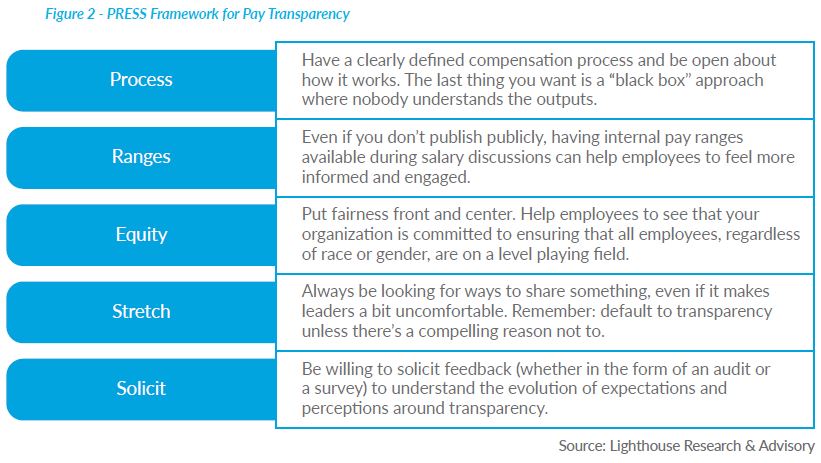Ben Eubanks over at Lighthouse Research and Advisory has written a fascinating white paper on transparency. Transparency in Compensation: Trends and Best Practices, underwritten by salary.com, is a thoughtful and interesting discussion of the impact of different levels of transparency in the workplace – from too little to too much. It presents an interesting model and some terrific takeaways.
If you’re struggling with – or merely thinking about – how much salary information you should be sharing, this discussion could be very helpful. This model might b e helpful in identifying the pressure points with which you may be dealing.
e helpful in identifying the pressure points with which you may be dealing.
Of course, your organization’s values may be a driver as well. More and more organizations are committing to greater transparency as a cultural imperative as well as a competitive differentiator.
The report also provides a process framework to follow as you consider making changes in your level of compensation openness:

This framework is simple and contains the most important advice in the report: “Remember, default to transparency unless there’s a compelling reason not to.”
Conversations around transparency are important. As we move away from the cultural norms managed by the Baby Boomers, values like transparency are beginning to take hold. As a Baby Boomer myself, I particularly favor this development. Being more forthcoming with our employees – and not just on compensation practices – will help us win the war for talent.
This article originally appeared on ChinaGorman.com.
